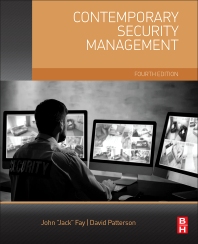How Female Terrorists Use Preconceptions to their Advantage
Male terrorists tend to get most of the press, but terrorist cells are recruiting more women, often due to security forces considering them less suspicious.




The May 2013 edition of the FBI’s Most Wanted Terrorist Listincluded its first woman – Joanne Chesimard, wanted for the 1973 killing of a New Jersey State Trooper. This addition calls attention to the phenomenon of female participation in terrorism. As illustrated in the 30-year anniversary of Chesimard incident, female contribution to terrorist activity is not new.
Ulrike Meinhof, co-founder of the Red Army Faction in West Germany, and Fusako Shigenbu, a founder of the Japanese Red Army, are two examples of the leadership roles in modern terrorism. Women have carried out prominent operations under the mantle of diverse terrorist groups, including: the Turkey-based PKK, Tamil Tigers in Sri Lanka, FARC in Colombia and violent jihadist groups, in Russia, especially in Chechnya.
In 2011, al Qaeda launched an online magazine,al Shamikha (the “Majestic Woman”), which encourages women to participate in violent jihad as well as providing beauty tips. The following year, al Qaeda formed a Burka Brigade, trained female terrorists with a mandate to attack Western targets.
Women terrorists have been involved in a wide breadth of violent acts on behalf of groups embracing all ideological perspectives, from secular to religiously motivated and single-issue to nationalist perspectives. Female terrorists have inflicted damage on soft and hard targets, often benefitting by less circumspection by government, private security and the public, because women are typically not perceived as being involved to terrorism.
This misconception is a factor in the success of women terrorists in resorting to a full array of modus operandi, such as bombings, suicide bombing, arson or stabbings. The last modality was used in May 2010 by Roshonara Choudhry, who stabbed British Member of Parliament Stephen Timms for his support of British forces in Operation Iraqi Freedom. Choudhry was sentenced to a minimum of 15 years following convictions of attempted murder and having an offensive weapon. Timms survived the attack.
During the past two decades, females have carried out hundreds of suicide bombings in Russia, Sri Lanka, Iraq, Israel and elsewhere. Some of these female suicide bombers were widows from conflicts in Iraq and Chechnya. Among the most infamous female suicide bombers are:
- Thenmozhi Rajaratnam of the Tamil Tigers undertook a suicide bombing in India in May 1991, killing the Prime Minister of India Rajiv Ghandi.
- In June 2000, Khava Barayeva and Luiza Magomadova conducted a suicide truck bomb attack against Russian soldiers in Chechnya.
- In January 2004, Hamas-affiliated Reem Riyashi, 22-year-old mother of two from Gaza, blew herself up at a joint Israel-Palestinian industrial zone, killing four Israelis. Al-Aqsa TV showed music videos in which her young daughter says she wants to follow in her mother’s footsteps.
- In November 2005, Muriel Degauque, a Belgian convert to Islam, undertook at suicide bombing in Baghdad, killing five and injuring five others.
- Hamas-linked Fatma Omar A-Najar, a grandmother, detonated her suicide belt, killed herself and injuring two Israeli soldiers in Gaza in November 2006.
- In August 2012, in Dagestan, Russia, 30-year-old Aminat Kurbanova exploded her suicide bomb vest at the home of Sufi preacher, Said Afandi Atsayev, and six others. She was linked with Chechen terrorists.
Females of all ages and status, including children, young adults, mothers and grandmothers as well as married and unmarried, have participated in terrorist operations. Also, female terrorists have run the gamut of diverse socio-economic backgrounds, including poor to middle class, and uneducated to university graduates.
One particularly disturbing case in Morocco involved sisters Imane and Sanae al Ghariss, who planned to conduct simultaneous suicide bombings at a supermarket. Samantha Lewthwaite, widow of July 2005 London suicide bomber Jermaine Lindsay, pledged to emulate her husband, and undertake a terror plot in Kenya. Lethwaite is believed to be on the run in Africa with British terror suspect Habib Saleh Ghani.
As with their male counterparts, women terrorists pursue such violence due to various instigators: perceived political and economic marginalization, ideological commitment, to avenge victimization of family or friends, financial benefits, a desire to improve their social status, hopelessness and heavenly benefits arising from martyrdom. Analogously, some women have been coerced into terrorism after they have been accused of bringing dishonor to their families through some moral transgression or even being the victim of rape.
One notable figure in the recruitment of female terrorists is Samira Ahmed Jassim, a mother who was detained by Iraqi security forces in January 2009. She claimed to have recruited about two dozen women to conduct suicide bombings. She worked with terrorists from Ansar al Sunna.
The following profiles of contemporary U.S. women terrorists are instructive as they illustrate a broad array of ideologies, modus operandi, and targets of such operatives:
- In October 2006, Jennifer Kolar and Lacey Phillabaum pled guilty to conspiracy, arson, and an explosive on behalf of the Animal Liberation Front and Earth Liberation Front, including an attack at the University of Washington in 2001, which caused $7 million in damages. Kolar and Phillabaum were sentenced to five years and three years, respectively.
- In February 2011, Colleen LaRose (“Jihad Jane”), pled guilty to a conspiracy to provide material support to terrorists, conspiracy to kill in a foreign country, false statement to government official and attempted identity theft. LaRose recruited men and women to wage violent jihad in South Asia and Europe, including plans to kill Swedish cartoonist Lars Viks, who drew an insulting cartoon of the Prophet Mohammed. The following month, Jamie Paulin-Ramirez, who was part of LaRose’s plot, pled guilty to conspiracy charges in relation to providing material support to terrorists. In September 2009, Paulin-Ramirez traveled with her daughter to Ireland, with the goal of supporting violent jihad.
- In August 2012, Alaska-based Karen Vernon, who along with her husband embraced extremist militia and sovereign citizen tenets, pled guilty to a conspiracy to murder a federal judge and an Internal Revenue Service agent. She was sentenced to 12 years in prison.
- In May 2013, Amina Farah Ali was sentenced to 12 years in prison in relation to providing and conspiring to provide material support to the Somali-based terror group al Shabaab. Her co-conspirator, Hawo Mohamed Hassan, was sentenced for 10 years in prison for the conspiracy and lying to government authorities. Both were based in Minnesota, following their immigration from Somalia.
The inclusion of females as terrorists essentially doubles the number of prospective recruits and contributors to a terrorist cause. This is particularly important as male operatives in groups such as al Qaeda (central) have been incarcerated or killed during the past few years. Also, women are viewed with less suspicion than men. Thereby, they provide tactical advantages, including capacity to undergo less frequent and rigorous searches by government authorities. The psychological impact of female terrorists is manifold as they engender a particular ferocity that is unexpected, yet, in so doing, aggravates its impact.
Generally, law enforcement, security personnel and the intelligence community at home and abroad have assumed that women will disdain from terrorist activities. Given the increased visibility, lethality and contributions of female terrorists worldwide, this underestimation of women terrorists merits a recalibration. In particular, expanded efforts to identify and undermine the exploits of contemporary terror-femme fatales should be implemented with great urgency.
About the Authors:
Dean C. Alexander is Director of the Homeland Security Research Program and Associate Professor of Homeland Security at Western Illinois University (WIU). Robert Ceresero earned his undergraduate degree from WIU in 2013.
Security’s Summer of 2013 Renewathon wraps up Sept. 30. Go to: www.SecurityMagazine.com/2013renewathon
Looking for a reprint of this article?
From high-res PDFs to custom plaques, order your copy today!










